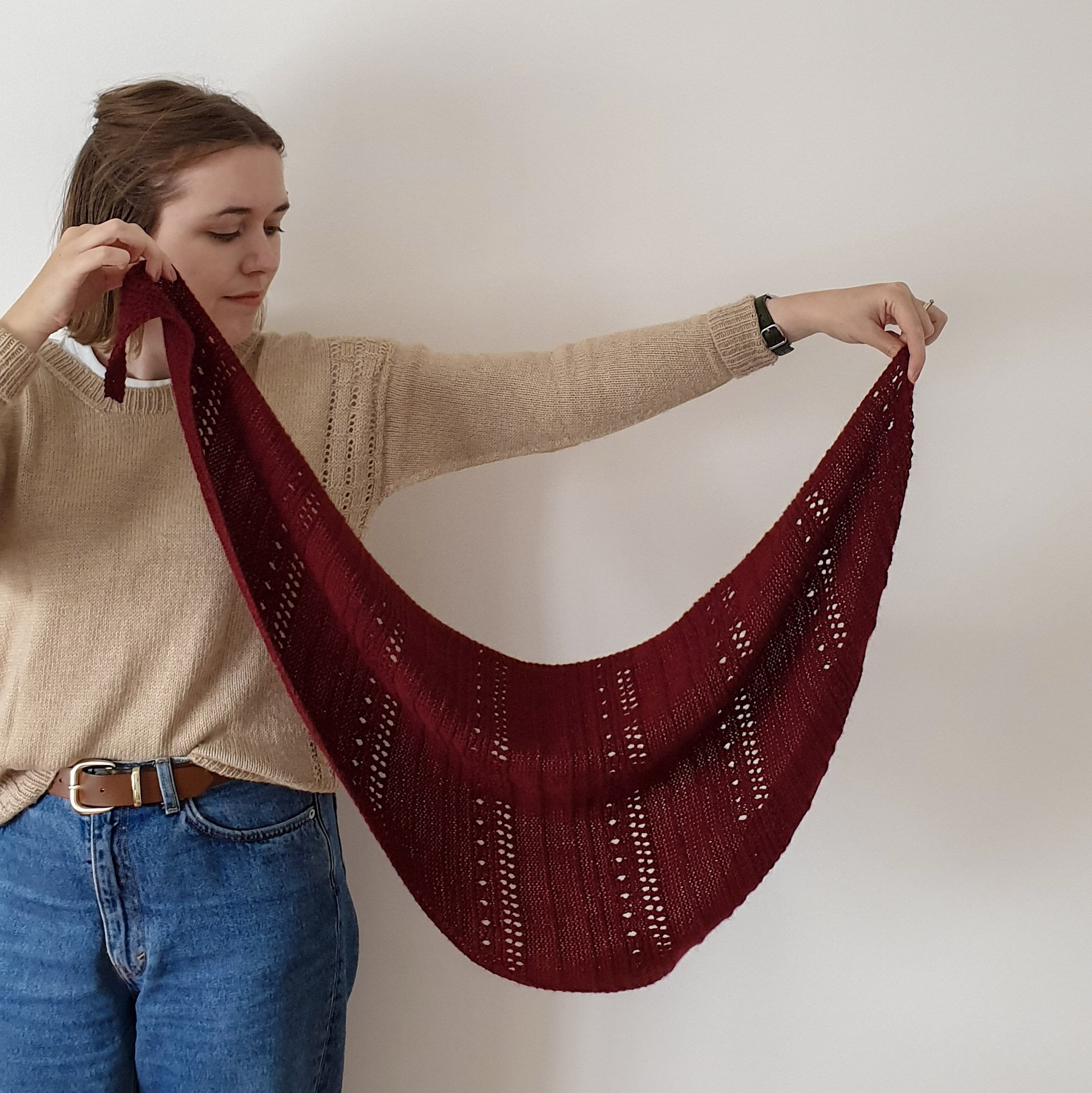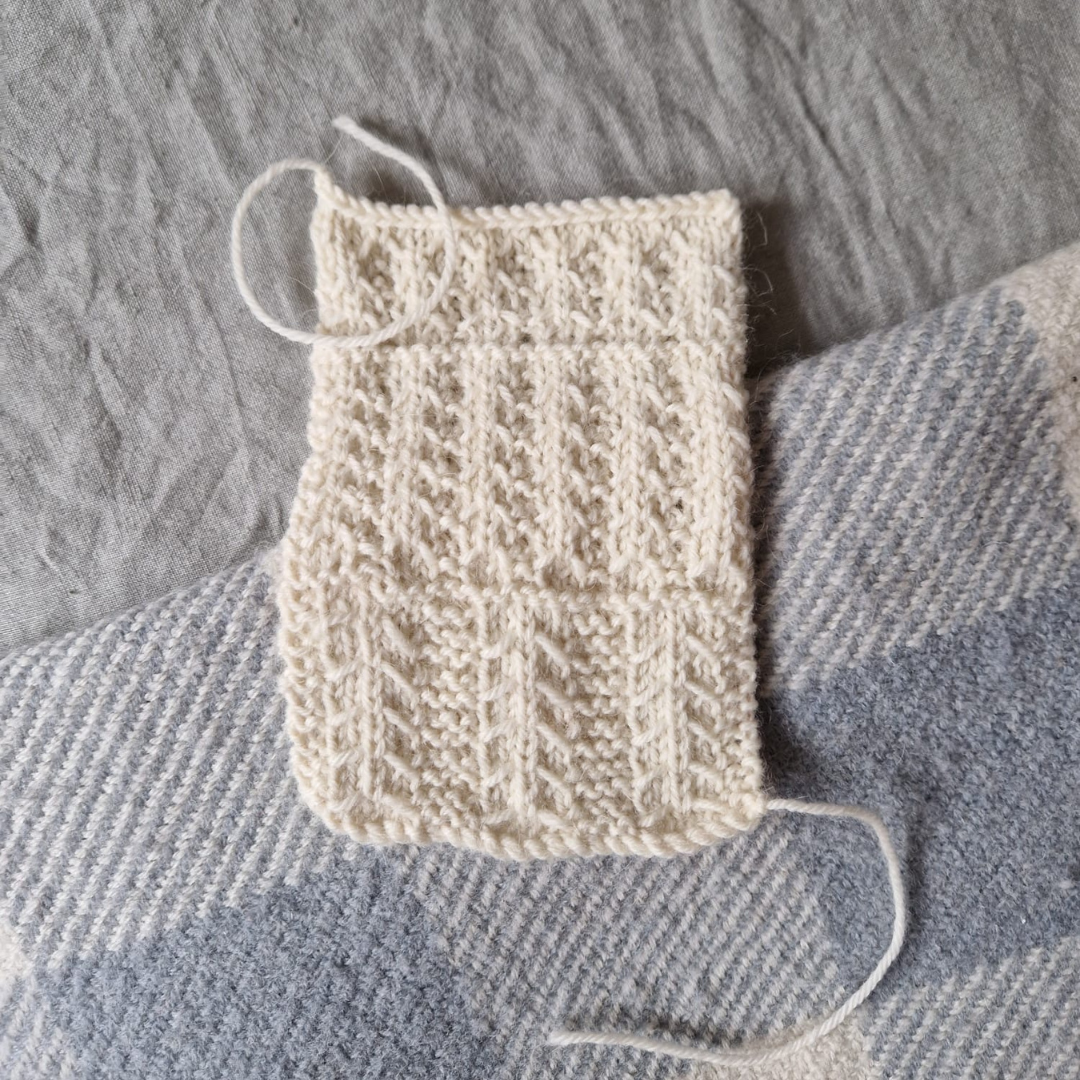4 Mistakes Knitting Pattern Designers Make With Customer Feedback
Have you ever invested tons of time and effort into designing a new knitting pattern, only to receive some negative feedback about it?
You might have had lots of compliments and positivity about it, but that one piece of negative feedback sticks out in your mind.
Perhaps you try to ignore it, push it to the back of your mind and try not to think about it, or maybe you fixate on it to the point that you lose confidence in your ability as a designer entirely! Either way, it doesn’t feel productive.
Ask any knitting pattern designer, and you will hear that you are NOT alone in receiving negative feedback about a pattern (myself included in this!)
In this blog post, I want to share mistakes that I’ve made when it comes to customer feedback (both positive and negative) so that you don’t have to learn the hard way.
By the end of this blog post, you will have set up a loop for dealing with customer feedback that will help you to grow as a designer and a small business.
Image description: photo of a woman looking down with the words “4 Mistakes Knitting Pattern Designers Make With Customer Feedback” on top of it
Mistake 1: Not asking for feedback
As a knitting pattern designer, you will get feedback about your patterns whether you ask for it or not, but you don’t have to wait around for it. You can proactively ask for it!
Asking for feedback can be nerve-racking, especially if you’re a sensitive soul like me, but if you don’t know where you are going right or wrong, you don’t know what to do more or less of!
Feedback is essential if you are going to keep up with your customers' needs. What might have worked for your customers a couple of years ago may no longer be acceptable to them, so their feedback helps you adjust to those changes and ensure you’re still getting it right for them.
When I first started running test knits, I didn’t have a formal way of gathering feedback from my test knitters. Naturally, I received feedback throughout the process; however, it wasn’t always from everyone, and it wasn’t always clear enough for me to take action.
Since introducing a feedback survey at the end of my test knits, I’ve been able to identify clear issues with a design by spotting patterns in the answers I get in the survey. It’s a straightforward way to digest all the information, and I like that it’s all in one place so I can easily go back and reference it.
Where to Ask for Feedback
Test knitting surveys are one of many ways to ask for feedback. If you have an email list or a way you stay in touch with your community, you can ask them to fill out a short survey on what designs they would like to see from you in the future.
You can also ask your customers for feedback when you’re having a casual conversation with them, whether it’s via email, DM or in person. Ask broad, open-ended questions at first, listening more than you speak, and then ask more detailed questions as you continue to chat. Don’t forget to note down anything significant to take away from the conversation!
Social media is also a great place to ask for feedback, whether it’s in the caption of a post or putting up a poll on Instagram stories. Your customers will love that you are involving them in your decisions as a business.
To help you figure out what questions you want to ask when gathering feedback, consider what areas of your knitting pattern design business you want to improve and grow. The feedback you receive in answer to these questions will help you reach those goals.
Mistake 2: Not Having a System for Tracking Feedback
It’s all well and good asking for feedback or gathering it from mentions on social media or project notes on Ravelry, but if you don’t have a way to track and categorise that feedback, you will struggle to do anything with it!
It can be challenging to make changes and grow as a designer if the feedback you receive is scattered all over the place: in random email threads, mentions on social media and a project page on Ravelry. Having a clear place where you store and categorise all of that feedback will make taking action on it so much easier.
A simple spreadsheet should do the job unless you’re doing a survey on something like SurveyMonkey, where the information is stored on their platform. In this spreadsheet, include the following:
The feedback itself
Category of the feedback
Pattern ideas
Adjustments to existing patterns
Are you getting a lot of the same questions about a pattern? Track it here - perhaps the pattern needs clarifying.
Feedback on pattern writing style
How you’re taking action on the feedback
Working on it at the moment
Making changes in the future
Not planning to make any changes
Etc.
Contact information for the person who provided the feedback
Name
Email address
Social media handle
I track all of the questions, feedback and requests I get about knitting pattern design to help guide what I write about here on the blog and what I teach inside Sweater Design School. This is a win/win, as it gives me ideas when I’m feeling stuck and means that my content is better tailored to my readers and students.
As I was planning this blog post, I realised that I don’t have a formal way to track feedback on my knitting patterns aside from the data from my test knitting surveys. Everything else is scattered all over the place or just in my head! Whilst I am taking action on the feedback I remember, I’m sure there are many things I could easily action that I’ve just forgotten about along the way.
Now, I plan to set up a spreadsheet to start tracking all of this so that I have a better overview of how my customers feel about my patterns and can make the next one even better. I recommend that you do the same!
Image description: photo of a woman covering her face with her hands. The text reads: 4 Mistakes Knitting Pattern Designers Make With Customer Feedback
Mistake 3: Not Taking Action on the Feedback
Collecting and categorising all of that feedback is pointless if you’re just going to sit on it. Instead, it should inform the decisions you make as a designer and eventually lead to positive change in your business.
An obvious way to take action on the feedback you receive as a designer is to fix any errata you encounter. This is generally relatively quick and easy to fix, and Ravelry makes it simple to send out any pattern corrections to people who bought the pattern.
You can also set up a page on your website to list errata. This means that if a customer is working from an older version of your pattern, they can easily find the solution without having to contact you.
You will receive feedback that is more difficult and slow to resolve, and in those cases, you will need to create a simple project plan or roadmap on how you intend to improve going forward. It is helpful to include rough ideas on timings here, as it will make it more likely that you will act upon it.
A few years ago, I was given the feedback that the original sizing for my sweater patterns needed to be more size-inclusive. This is an excellent example of feedback that requires more of a project plan to act upon, as it wasn’t like I could offer new sizing that day. I needed to go through a process to create a new size chart for new designs and update old sweater patterns.
Since then, I’ve overhauled my size chart, which my not-yet-released sweater patterns use, but I am yet to re-release any of my older patterns. I got as far as resizing, writing, tech editing and test knitting a pattern, but I never got the new sample photographed! Instead, other work took priority, and this dropped to the bottom of my list.
I’ve realised that, without setting deadlines, I’m not going to make significant progress on resizing my older patterns very quickly, so that’s what I plan to do going forward.
For every piece of feedback you receive, commit to taking action on it, whether that means prioritising it now, in the future or simply deciding that you don’t want to change that area of your business.
Mistake 4: Not following up
Confession: this is something I am SO guilty of.
Customers often give constructive feedback because they want your business to do better, so imagine how that customer would feel if you followed up with them a few weeks or months down the line to let them know the changes you have made based on their feedback. I bet they would be happy to hear that you were receptive enough to make changes and that they actually made a difference.
This is why it’s helpful to include the customer’s contact information in your feedback tracking spreadsheet. It makes following up a breeze!
Since following up doesn’t often occur to me, even when I’ve made changes based on someone’s feedback, I plan on setting up a recurring task in my task manager, Asana, to help me remember to do this.
Image description: Woman sat in a cafe looking down with her head resting on her hand.
Bonus! How to Cope with Criticism
As I shared earlier, I’m a sensitive soul, so all of the below is a major WIP for me, but here is how I try to deal with negative feedback:
Be humble: Avoid your natural reaction to be defensive about your work and instead, listen calmly to the feedback you are given
Don’t invalidate them: Whether you immediately agree with it or not, the criticism you are being given is valid to your customer, so acknowledge their feelings and experiences and thank them for their feedback.
Be grateful: It might feel uncomfortable saying thank you to someone who is criticising your work, but all kinds of feedback can be used for positive change in your life and business, and therefore, it’s something we can be very grateful for.
Say sorry: If you or your pattern has negatively impacted your customer, say sorry - even if you didn’t intend to hurt them. It still matters.
Offer to help: If you can help find a solution to this customer’s problem, offer it, whether it’s something you can do right away or an action you can take in the future.
Move on: As long as you have closed the feedback loop (getting the feedback, tracking it, acting upon it and following up on it), you can move forward. There is no need to fixate on past mistakes and spiral into self-doubt when you are currently making changes to fix them.
Conclusion: Mistakes Knitting Pattern Designers Make With Customer Feedback
Negative feedback or criticism doesn’t need to be something we fear as knitting pattern designers. In fact, it can be more valuable to you as a designer than the positive!
With the right feedback loop in place, you can make changes and improvements to your patterns that continue to positively impact your customers, making them more likely to buy more of your designs and recommend them to their friends.
Do you have a system for getting, tracking, actioning and following up on customer feedback? Share it in the comments so your fellow knitting pattern designers can learn from you.























